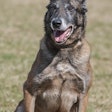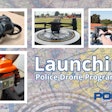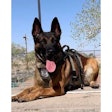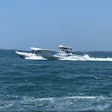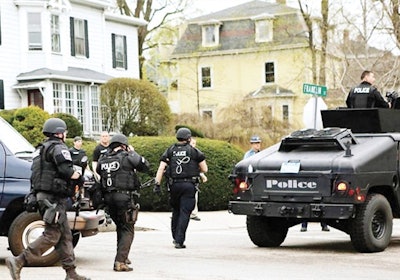
Last April 19, Revere, Mass., Police Chief Joseph Cafarelli was leading the North Metro SWAT team as it participated in a massive manhunt. One of the Boston Marathon bombing suspects was dead; the other was at large and last seen in the Boston suburb of Watertown. Units from federal, state, and local agencies—including North Metro SWAT—were literally going street to street and even building to building searching for Dzhokhar Tsarnaev.
The night before, Tsarnaev's older brother Tamerlan had been killed in a gunfight with police. The brothers were not only wanted for the Boston Marathon bombing earlier that week, which had killed 3 and wounded 264, but also for the murder of MIT Police Officer Sean Collier and the shooting of MBTA Officer Richard H. Donahue Jr.
All day that Friday the suburbs of Boston as well as the city itself had been on lockdown. The streets were deserted and the public was calling in numerous sightings of the fugitive terror suspect. Authorities reported that Tsarnaev was desperate, possibly wounded, and likely armed with both firearms and explosives. The public and law enforcement wanted him off the streets.
As part of the task force assigned to find and capture the younger Tsarnaev, North Metro SWAT had been assigned to search an area of Watertown. The day had yielded nothing but false leads. Law enforcement teams had been searching hundreds of homes and buildings for the past 14 hours and coming up empty.
As night fell, North Metro SWAT was searching a large apartment complex with one of the Boston Police SWAT teams. And once again, nothing.
Frustration was mounting. But then a Boston SWAT team commander alerted them that shots were fired on Franklin Street, and the suspect was close to their current position. North Metro was invited to come along, so both teams mounted up for Franklin Street.
Seconds Apart
Four days earlier on April 15, the Boston area was celebrating. Thousands of runners were taking part in the 117th Boston Marathon. And hundreds of thousands were cheering them on from the sidewalks and watching on TV. Then…
Horror. Two explosions, seconds apart. Three spectators were dead and 264 more people watching or running in the race were injured.
The Emergency System and Command Center went into effect, the BAPERN (Boston Area Police Radio Emergency Network) sent out a radio call to all surrounding cities for help. The bomber (or bombers) was at large, which meant he, she, they could strike again. There was no higher priority for Boston area law enforcement than making sure that didn't happen again.
Revere police officers on duty that day heard the Boston PD's call for help and immediately called SWAT team commander Lt. Carl Ruggiero to inform him of the situation. Ruggiero told them to keep him informed and he would call the chief and ask him to activate the regional North Metro SWAT Team, which includes members from the small cities of Revere, Everett, and Malden. Ruggiero made that call, and Revere Police Chief Joseph Cafarelli told him to get the team ready and meet at the station.
North Metro SWAT deployed to Boston and was assigned to secure the Boston City Hall, Faneuil Hall, and the Federal Buildings. They weren't alone. Teams had come from as far away as Connecticut.
Shelter in Place
Three days later the suspects had been identified and most of the teams from outside of the Boston metro area had gone home. But on the night of April 19, 2013, again a request for assistance went out over the BAPERN system. The search for the two suspects had led the Boston, Cambridge, Watertown, MIT, Boston University, Harvard, Massachusetts State Police, and the MBTA Police to Watertown.
Events had unfolded quickly. The suspects had reportedly ambushed and killed MIT Officer Sean Collier, carjacked an SUV taking the driver hostage, and then released him. The night had ended in a furious battle between the suspects and police from multiple agencies. MBTA Officer Richard Donohue was critically wounded in the shootout. One suspect, Tamerlan Tsarnaev, 26, was now dead. The other, Dzhokhar Tsarnaev, 19, was armed, dangerous, and on the run.
Police say Dzhokhar Tsarnaev fled the gunfight in the carjacked SUV in such a panic that he ran over his own brother. He also reportedly covered his retreat by tossing IEDs (improvised explosive devices) at the police. And there was suspicion that he may have been wearing a suicide vest. The younger of the two bombing suspects clearly presented extreme peril to the public.
Finding Dzhokhar Tsarnaev soon became such a law enforcement priority that the public was told to "shelter in place" and tactical units were withdrawn from the city and deployed to Watertown. North Metro SWAT joined the search.
Going In
While the tactical units had spent April 19 fruitlessly searching for the suspect, their quarry had spent the day in a very unlikely refuge.
But eventually just about any hiding place can be discovered.
That evening the owner of the small white house at 67 Franklin Street, Watertown, had noticed something odd about the boat he had covered and stored in his backyard. The cover was loose. So he got his ladder, and went up the side of the boat. There was blood. And what he thought was a body.
He jumped down from the ladder and called the police.
Minutes later police were on the scene, and they were engaging Tsarnaev in a gunfight. More than 40 shots were fired.
When the North Metro and Boston SWAT teams arrived on the scene it was already surrounded by uniformed police officers. They immediately deployed.
Chief Cafarelli went down the small driveway, gripping his M4. His team, which consisted of his brother and cousin (who are both Revere officers), an Everett officer, an MBTA officer, and Malden officers, took the left side of the house. It had a direct view of the boat.
Cafarelli took a position beside the house with a good visual on the boat. Other members of his team had taken position inside the house overlooking the yard and the boat. Boston SWAT was positioned on the opposite side of the house.
North Metro's SWAT sniper, Chief Cafarelli's brother John, had taken position across the driveway on a Boston PD Lenco Bear. Using the armored car's turret for cover, he trained his Savage bolt-action .308 caliber rifle on the boat.
The tactical teams surrounding the house waited for instructions from an FBI hostage negotiator, but the suspect in the boat wasn't in the mood for conversation. Nor did he seem to want to surrender. He was moving around and was trying to light what was thought to be a can of gasoline.
North Metro SWAT watched as the assault began. Flash-bangs, OC gas canisters, and stun grenades hit the boat. The movement in the boat appeared to cease.
Chief Cafarelli concentrated on the boat. Just about all of the officers on the scene were certain that they had Tsarnaev pinned down. But still there were creeping doubts.
"I was hoping this was not another false alarm; we needed to find this guy," Cafarelli says.
Confirmation of Tsarnaev's presence was needed. So the Boston Police used an armored car with a ram attached to it to open the shrink wrap over the cockpit of the boat where the suspect was hiding. They were able to open some of the shrink wrap that was concealing the suspect.
It was almost over.
Get Him
The team held their position covering the suspect. Finally, the FBI negotiator told a sergeant from Malden SWAT that the time for talking was over. It was time to move in and take down Tsarnaev. The sergeant relayed the message to the chief.
Cafarelli and his team advanced. As they did, the suspect stood up. "He looked like he was in shock, and he was disheveled," the chief says.
The team proceeded down the driveway and into the backyard in the open, yelling to the subject to show his hands. "I did not know if he had a suicide vest on, more explosives or weapons. We just had no idea, but if he did, we would all be dead," the chief says.
Several officers from North Metro moved slowly toward the boat. All their eyes were trained on Tsarnaev. He was standing up, lit by spotlights and flashlights.
"Several of us pulled him down," Cafarelli says. "I grabbed his leg, pulled him off the boat, and brought him to the ground. He landed on his back."
Cafarelli and his team swarmed the suspect. They opened his shirt looking for a suicide vest or IEDs; no devices were found. The suspect was then cuffed by the North Metro SWAT officers and an MBTA officer. Tactical EMTs and medics from the ATF and FBI rushed in to treat the suspect's wounds.
Cafarelli climbed into the boat to search for additional suspects or explosive devices. It was clear.
The scene cleared, the tactical units climbed back into their armored vehicles, as the streets filled with people yelling and cheering for them.
It was over, the terror was stopped, and a small regional SWAT team that had been organized just a decade before had played a key role in the capture of the most wanted man in America.
North Metro SWAT had made the capture of a lifetime. "We were fortunate to find ourselves in the right place and in the right time, and we did what any other team would have done," Cafarelli says. "It was truly an honor to be a part of such an operation and to help bring it to a safe and successful conclusion."
Rick Rizzo is a native of Revere, Mass., who served as a police officer in the Boston area for 25 years. He is now a TV producer living on the West Coast.









